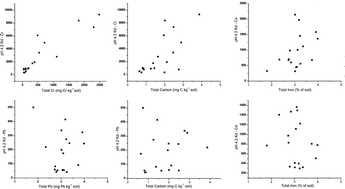Leather tanneries around the world, including China, introduce chromium (Cr) and other metals into the environment. In China, the population pressure compels the utilization of every piece of available land for food production. In this study, we investigated the content, leachability and possible storage sinks for Cr and other metals in soils around facilities of leather industry in southern China. It was found that Cr in soils impacted by tannery can be as high as 2484 mg Cr kg−1 soil, and the mean contents of other metals such as Zn (214 mg Zn kg−1 soil), Cd (5.4 mg Cd kg−1 soil), As (17 mg As kg−1 soil) exceeded the soil quality standards and guidelines in China and Canada. Simulated leaching studies (i.e., Synthetic Precipitation Leaching Procedure) indicated that these soils could release Cr and other metals in concentrations above the environmental quality guidelines and standards for water in China and Canada. As a result, the mobility of metals from these soils can potentially contaminate both groundwater and surface water. We also found differential leachability of metals with soil properties such as total metal and total carbon contents. Principal component analysis of the total contents of 32 elements showed that the possible major sinks for Cr are organic matter and oxides of Fe/Mn/Al, while sulfates and phosphates are potential storage of Cd, Zn, Cu and Pb. The information obtained from this study can be valuable for the restoration of ecosystem functions (i.e., food production) in the study area.

You have access to this article
 Please wait while we load your content...
Something went wrong. Try again?
Please wait while we load your content...
Something went wrong. Try again?


 Please wait while we load your content...
Please wait while we load your content...